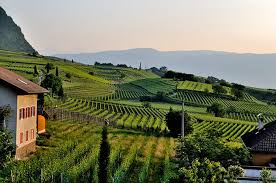by Dwight Furrow
 The wine world thrives on variation. Wine grapes are notoriously sensitive to differences in climate, weather and soil. If care is taken to plant grapes in the right locations and preserve those differences, each region, each vintage, and indeed each vineyard can produce differences that wine lovers crave. If the thousands of bottles on wine shop shelves all taste the same, there is no justification for the vast number of brands and their price differentials. Yet the modern wine world is built on processes that can dampen variation and increase homogeneity. If these processes were to gain power and prominence the culture of wine would be under threat. The wine world is a battleground in which forces that promote homogeneity compete with forces that encourage variation with the aesthetics of wine as the stakes. In order to understand the nature of the threat homogeneity poses to the wine world and the reasons why thus far we’ve avoided the worst consequences of that threat we need to understand these forces. I will be telling this story from the perspective of the U.S. although the themes will resonate within wine regions throughout much of the world.
The wine world thrives on variation. Wine grapes are notoriously sensitive to differences in climate, weather and soil. If care is taken to plant grapes in the right locations and preserve those differences, each region, each vintage, and indeed each vineyard can produce differences that wine lovers crave. If the thousands of bottles on wine shop shelves all taste the same, there is no justification for the vast number of brands and their price differentials. Yet the modern wine world is built on processes that can dampen variation and increase homogeneity. If these processes were to gain power and prominence the culture of wine would be under threat. The wine world is a battleground in which forces that promote homogeneity compete with forces that encourage variation with the aesthetics of wine as the stakes. In order to understand the nature of the threat homogeneity poses to the wine world and the reasons why thus far we’ve avoided the worst consequences of that threat we need to understand these forces. I will be telling this story from the perspective of the U.S. although the themes will resonate within wine regions throughout much of the world.
The modern wine world in the U.S. that began to emerge and solidify in the 1950’s was built on five pillars, all of which contributed to the remarkable quality revolution that transformed wine into a readily accessible symbol of refinement that graces even middle class dinner tables throughout the world. Those pillars include: the adoption of the French image of wine as a dry (i.e. not sweet), food friendly, nuanced aesthetic object; advances in wine technology that enabled clean, consistent wines and extracted more flavor; an increase in ripeness levels encouraged by that improved technology as well as the emergence of warm climate wine regions; and the adoption of independent standards of wine criticism that put pressure on complacent traditions to increase quality. All of this took place in a context of expanding demand and the resulting need to ramp up supply and develop more consumer friendly marketing. Read more »
